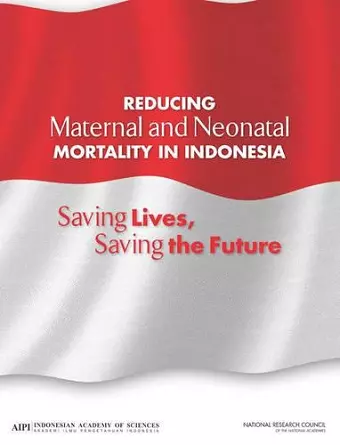Reducing Maternal and Neonatal Mortality in Indonesia
Saving Lives, Saving the Future
National Research Council author Policy and Global Affairs author Development, Security, and Cooperation author Indonesian Academy of Sciences author Joint Committee on Reducing Maternal and Neonatal Mortality in Indonesia author
Format:Paperback
Publisher:National Academies Press
Published:26th Jan '14
Currently unavailable, and unfortunately no date known when it will be back

The Republic of Indonesia, home to over 240 million people, is the world's fourth most populous nation. Ethnically, culturally, and economically diverse, the Indonesian people are broadly dispersed across an archipelago of more than 13,000 islands. Rapid urbanization has given rise to one megacity (Jakarta) and to 10 other major metropolitan areas. And yet about half of Indonesians make their homes in rural areas of the country. Indonesia, a signatory to the United Nations Millennium Declaration, has committed to achieving the Millennium Development Goals (MDGs). However, recent estimates suggest that Indonesia will not achieve by the target date of 2015 MDG 4 - reduction by two-thirds of the 1990 under - 5 infant mortality rate (number of children under age 5 who die per 1,000 live births) - and MDG 5 - reduction by three-quarters of the 1990 maternal mortality ratio (number of maternal deaths within 28 days of childbirth in a given year per 100,000 live births). Although much has been achieved, complex and indeed difficult challenges will have to be overcome before maternal and infant mortality are brought into the MDG-prescribed range.
Reducing Maternal and Neonatal Mortality in Indonesia is a joint study by the U.S. National Academy of Sciences and the Indonesian Academy of Sciences that evaluates the quality and consistency of the existing data on maternal and neonatal mortality; devises a strategy to achieve the Millennium Development Goals related to maternal mortality, fetal mortality (stillbirths), and neonatal mortality; and identifies the highest priority interventions and proposes steps toward development of an effective implementation plan. According to the UN Human Development Index (HDI), in 2012 Indonesia ranked 121st out of 185 countries in human development. However, over the last 20 years the rate of improvement in Indonesia\'s HDI ranking has exceeded the world average. This progress may be attributable in part to the fact that Indonesia has put considerable effort into meeting the MDGs. This report is intended to be a contribution toward achieving the Millennium Development Goals.
Table of Contents- Front Matter
- Summary
- Chapter 1 Introduction
- Chapter 2 The Data Conundrum
- Chapter 3 Maternal, Fetal, and Neonatal Mortality
- Chapter 4 The Indonesian Health Care System
- Chapter 5 The Quality of Care
- Chapter 6 Governance Issues
- Chapter 7 Strengthening the Financing of Maternal and Neonatal Health
- Chapter 8 Recommendations
- Appendix: Fertility Decline in...
ISBN: 9780309290760
Dimensions: unknown
Weight: unknown
130 pages